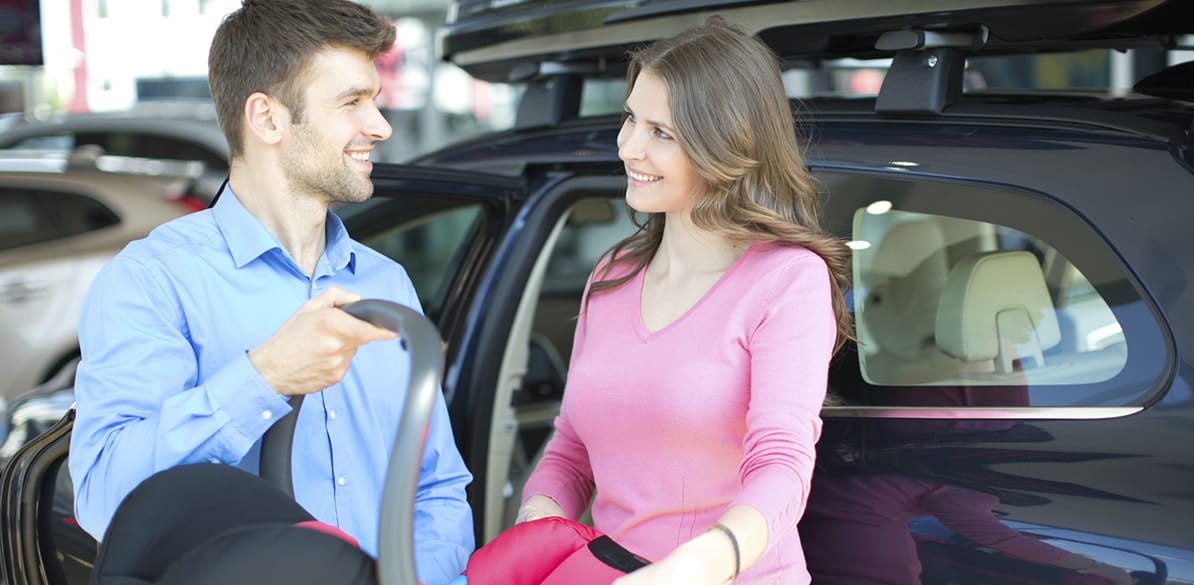Which car seat should I buy?
Practical advice for buying a child car seat

Road Safety
We worry about our baby’s health, development and safety. And although people tend to agree on the first two areas, no matter who you ask, in the case of safety and, more specifically, car safety, the recommendations and guidelines can vary considerably depending on the source consulted.
The choice of a child seat is not a trivial matter and, for this reason, we always recommend that you purchase this product in a specialized store where you will be assisted by professional experts who will recommend the best product for your child and, also, for your car.
Why for our car? Not all child seats are the same and not all cars are the same, so when choosing a seat we should try different models of seats in our car to see which one best suits both the child and the car.
And what should we check?
1. Space inside the vehicle
First of all, we must make sure that there is enough space inside the car to install the seat, that it does not touch the front seat, that we can close the door and that, if the seat rotates, we can turn it around easily. If the seat reclines, we must check that we can recline it without the car seat preventing us from doing so.
We should raise the headrest to its highest position to check that we have enough space, and it should never touch the roof of the car.
Normally in forward-facing car seats, the head can protrude from the headrest up to about 7 cm, an issue that must be taken into account to avoid surprises as the child grows.
In addition, we have to make sure that the place where we put the child seat is both approved and suitable. We can check this information in the car’s instruction manual.
If all this is correct and we are satisfied, we can move on to the next step.
2. Stability of the seat
With the seat fixed to the car using the appropriate method, either the seat belt or ISOFIX anchors, check that the base of the seat is supported properly, as there are different seat shapes and sometimes the base does not sit correctly.
If the seat has a roll bar, this must be pressed against the back of the car seat, and if the seat has a support leg, this must reach the floor and be properly supported.
If the chair has a top tether, or head support band, we must make sure that our car has the attachment (it is usually located in the trunk of the car) and that we can tighten it correctly.
3. Fitting the child in
Whenever possible, we should sit the child in the seat. We buy the seat, but we are not its main user. The child must feel comfortable in the chair, without being cramped, with sufficient width and legroom.
Normally child seats are not very breathable, so we have to take into account whether they are made with technical fabrics and textiles that are cool and help to control the child’s temperature.
In addition, infant car seats use space reducers. These should be comfortable and adapt to the baby’s shape and, if possible, they should be made of organic textiles, since they will be in contact with the baby’s skin.
Once we have bought the ideal car seat for us and for our child, and we have it correctly installed in the car, we can move on to the final step.
4. Survival space
When we talk about child safety we have to think about the safety of our child inside the car as a whole. Anything inside the car can interact with the child in the event of a collision, so it is important to maximize what is defined as the survival space.
We have to understand that the child seat acts like a rubber band to stop the child inside the car. And in this forward movement no vital part of the child (mainly the head and neck) should come into contact with anything. The survival space is therefore the space necessary to stop the child in the event of braking or collision.
It is important that nothing invades this space, which is generally the space in front of the child, so that the child does not encounter anything when moving forward if the vehicle should stop abruptly.
In short, we must be very attentive when we buy the child seat, when we install it in the car, how we place the child in the seat and how we restrain them with the appropriate harness tension. But in addition to all of this, it is very important that the seat in front of the child is as far away from them as possible, in order to maximize their survival space and avoid possible injuries.
Finally, do not place objects on the rear deck/parcel shelf of the car, since in the event of a collision these would be thrown forward and, in general, avoid any loose elements inside the car, since these could become projectiles in the event of sudden braking or an unexpected stop.
